Ending diarrhea one community at a time
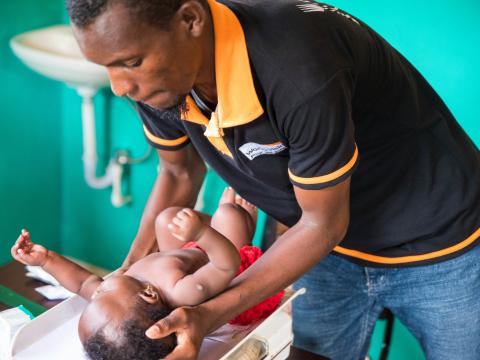
“The children were only 6 months old at the time and on that day, both were having a hard time. Something was wrong. They were having frequent watery stools; they were apathetic, not playing and shrinking right before my eyes. It was diarrhea,” recounts Venette Leon, a 25-year-old mother of five whose youngest twins were suffering through an episode of diarrhea.
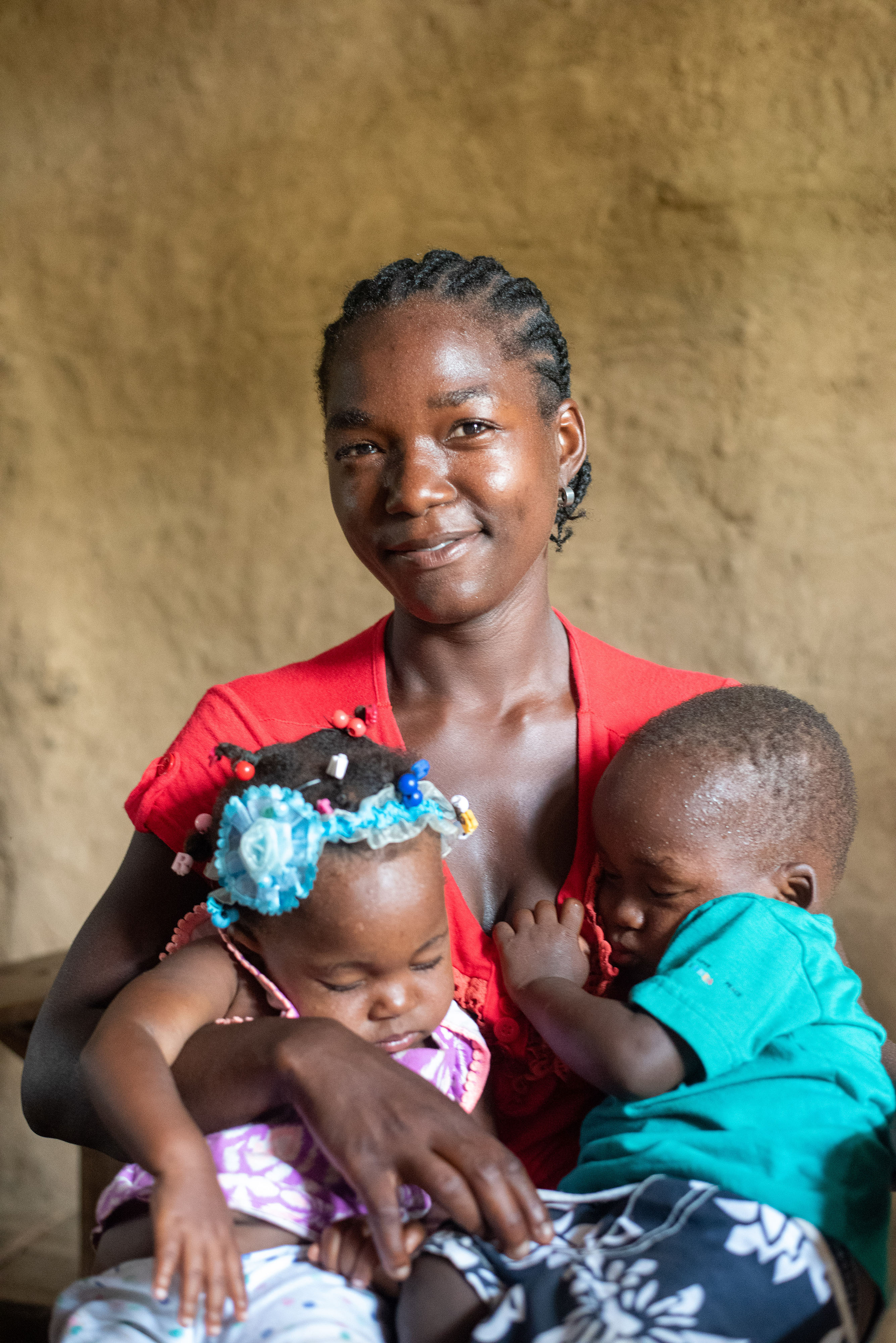
Diarrheal diseases account for one in nine child deaths worldwide, with an estimated 2,195 children killed every day. That’s more than AIDS, malaria, and measles combined. According to a study by the Child Health Epidemiology Reference Group of WHO and UNICEF [1], diarrhea is the second leading cause of death among children under the age of five.
In low-income countries like Haiti, children under three years old experience on average three episodes of diarrhea every year. Each episode deprives the child of the nutrition necessary for growth. As a result, diarrhea is a major cause of malnutrition. Malnourished children are also more likely to fall ill from diarrhea. Diarrhea infections in children have major lifelong implications, such as growth stunting, that affects 22% of children under five in Haiti. It also increases risk of mortality from other infectious diseases such as malaria, measles and pneumonia [2].
In Haiti, poor sanitation and limited access to clean water have been the major causes of diarrhea in children under five[3]. In fact, about 67% of the population do not have access to improved sanitation and about 27% do not have access to clean water. To make matters worse, since October 2010, Haiti has been plagued by a cholera epidemic that has led to approximately 819,000 people infected and 9,789 deaths as of January 2019 according to UNOCHA report[4].
The North and Centre Departments of Haiti, where World Vision conducts about 89% of its operations, have the highest prevalence of diarrhea for children under five in the whole country. Approximately one in every four child in these departments suffers from diarrhea, while one in every five children is affected by diarrhea in other parts of the country[5].
Following such heartbreaking statistics, World Vision Haiti made the decision to refocus its interventions on WASH (Water, Sanitation and Hygiene) and Health and Nutrition, in order to meaningfully impact the lives of the most vulnerable in the regions where it operates.
Addressing the issue of diarrhea in the community is a complex task. Through its child survival technical program, World Vision Haiti implemented a series of activities focused on reducing open defecation, improving access to clean water and promoting hygiene behavior change.
In a household census it conducted in its areas of intervention in 2016, World Vision Haiti found that more than 72% of the most vulnerable families do not have access to drinking water through protected water points, and instead gather water from unprotected sources that are often exposed to contamination from animal and human waste.
A young girl named Wilnesse living in Matelgate of the Center Department explains that, “Access to water has been very challenging in my neighborhood. I used to wake up at 3 a.m. to get water in a hole on the ground. As we were filling our buckets, we found a piece of cloth full of feces in the water. At that time, it was already 6 a.m. and many people had already come and gone.”
World Vision Haiti has increased access to protected drinking water for more than 222,000 people.
Wilnesse’s experience is not unique. Children in the rural areas of Haiti play a critical role in their family as they fetch water for their entire household. Without access to clean water, the entire family is at risk, and children are the first to be affected.
To combat this silent killer, World Vision Haiti has increased access to improved drinking water for more than 222,000 people through the construction and rehabilitation of 167 water points in communities, schools and health centers in various parts of Haiti during the past three years.
“Access to water goes beyond just having water for drinking and bathing. With access to clean water from a protected source, children can get to school on time, meals are cooked on time and children are protected from violence and abuse as they don’t have to travel outside of their communities to fetch water,” explains Jean-Remy Raphael, WASH Advisor for World Vision Haiti.
One of the key drivers of this achievement is the reinforced partnership with the National Directorate of Drinking Water and Sanitation (DINEPA) and Regional Offices of Drinking Water and Sanitation (OREPA). Jean-Remy Raphael states that by working with DINEPA and OREPA, World Vision Haiti has been able to improve, extend and expand existing water structures to reach communities that otherwise would not be reached. Along with DINEPA and OREPA, World Vision Haiti is contributing to Sustainable Development Goal 6: Ensure availability and sustainable management of water and sanitation for all.
Through the intentional and collaborative efforts between World Vision Haiti, DINEPA and the communities, approximately 19% more of the most vulnerable families in World Vision’s Area Programs gained access to clean water during the past 3 years. Increasing the percentage of most vulnerable families with access to clean water to 47%.
Wilnesse attests that, “Ever since World Vision Haiti built the water point in my community, the situation has much improved. Our water is clean and abundant. We don’t have to wake up before dawn anymore or be afraid to drink the water.”
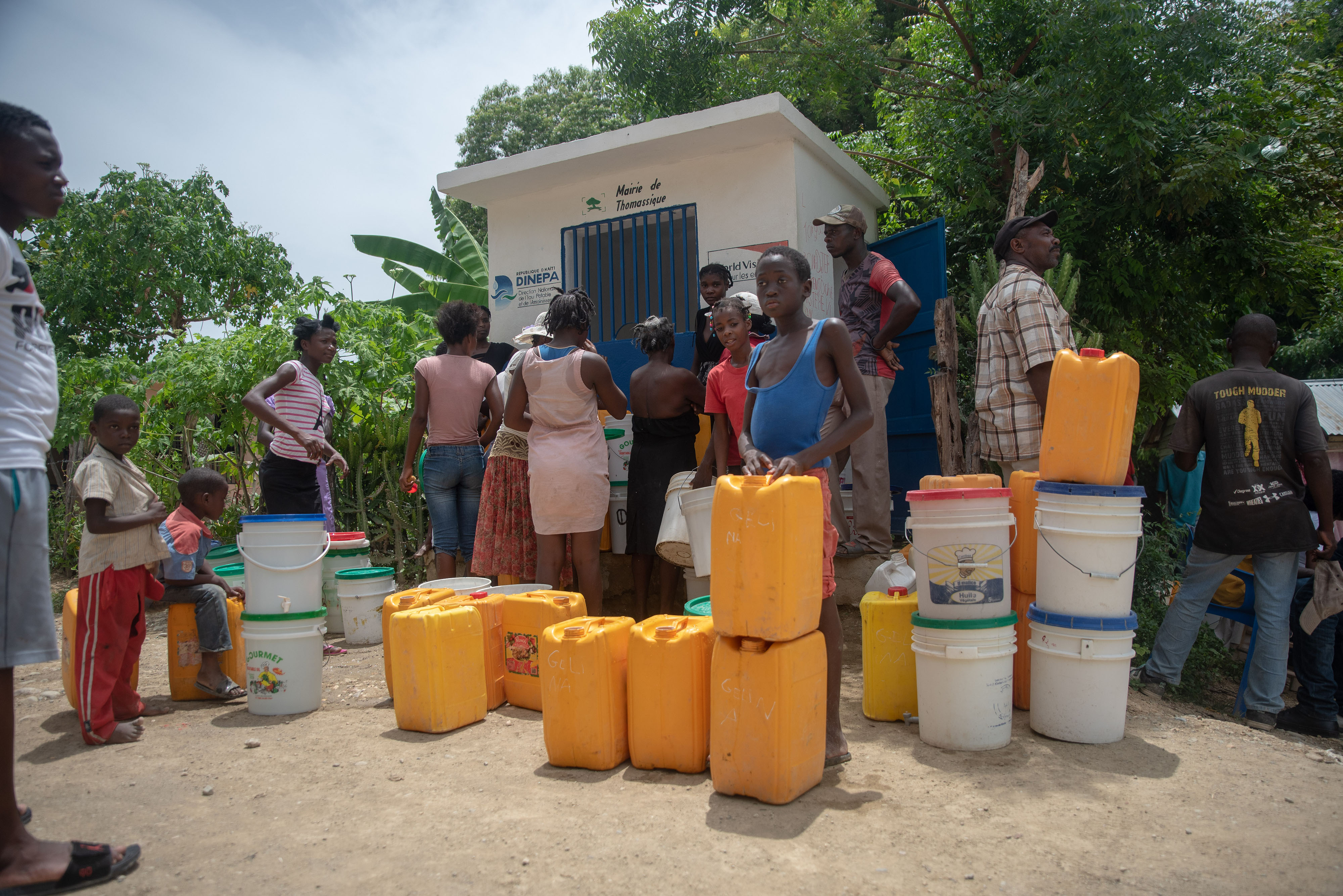
Access to clean water is just one of the step towards reducing diarrhea prevalence in the communities. A common practice that weighs heavily on the health and survival of children is open defecation, which perpetuates and spreads diarrheal diseases such as cholera.
World Vision Haiti’s household census revealed that more than 90% of the most vulnerable families practice open defecation in holes or ditches and less than 4% of them have access to improved sanitation facilities, such as individually owned or shared modern toilets or latrines.
To combat open defecation and its consequences, World Vision Haiti has been intentionally promoting the construction of family owned latrines, using locally sourced materials and neighborhood collaborative labor, in combination with community campaigns to halt the longstanding practice of open defecation. This combination of self-motivated latrine construction and community campaigns, also known as the Community Led Total Sanitation approach, is slowly but steadily transforming one community at a time.
Polès Monpremier, a 62 year-old grandfather, has personally lived through the nefarious impact of open defecation on his family when he lost his daughter, who was still in her twenties, to cholera. With much sadness, Polès says “It was about 2 a.m. that day, when she suddenly started vomiting a white substance. In a matter of hours, she lost all her fluids and died. I didn't know what cholera was then, but I do now.”
Digging latrines is no small task. The hole needs to be 1.5 to 2.5 meters deep depending on the terrain. For most families, this depth is not something they can dig on their own. This is where “Konbit” comes in.
In rural communities, farmers practice a traditional form of work organization based on mutual aid called “Konbit.” On this occasion, each person takes turns divesting themselves of all personal interests to lend a hand to others in the group. In the Community Led Total Sanitation approach, family groups of approximately 10-15 household heads join forces to dig a latrine in each of their homes. They start by digging a latrine in one group member's home and upon completion, move to another member's home for the same work. This is repeated until every member has a latrine built. Ideally, in one week, 5-10 latrines are completed.
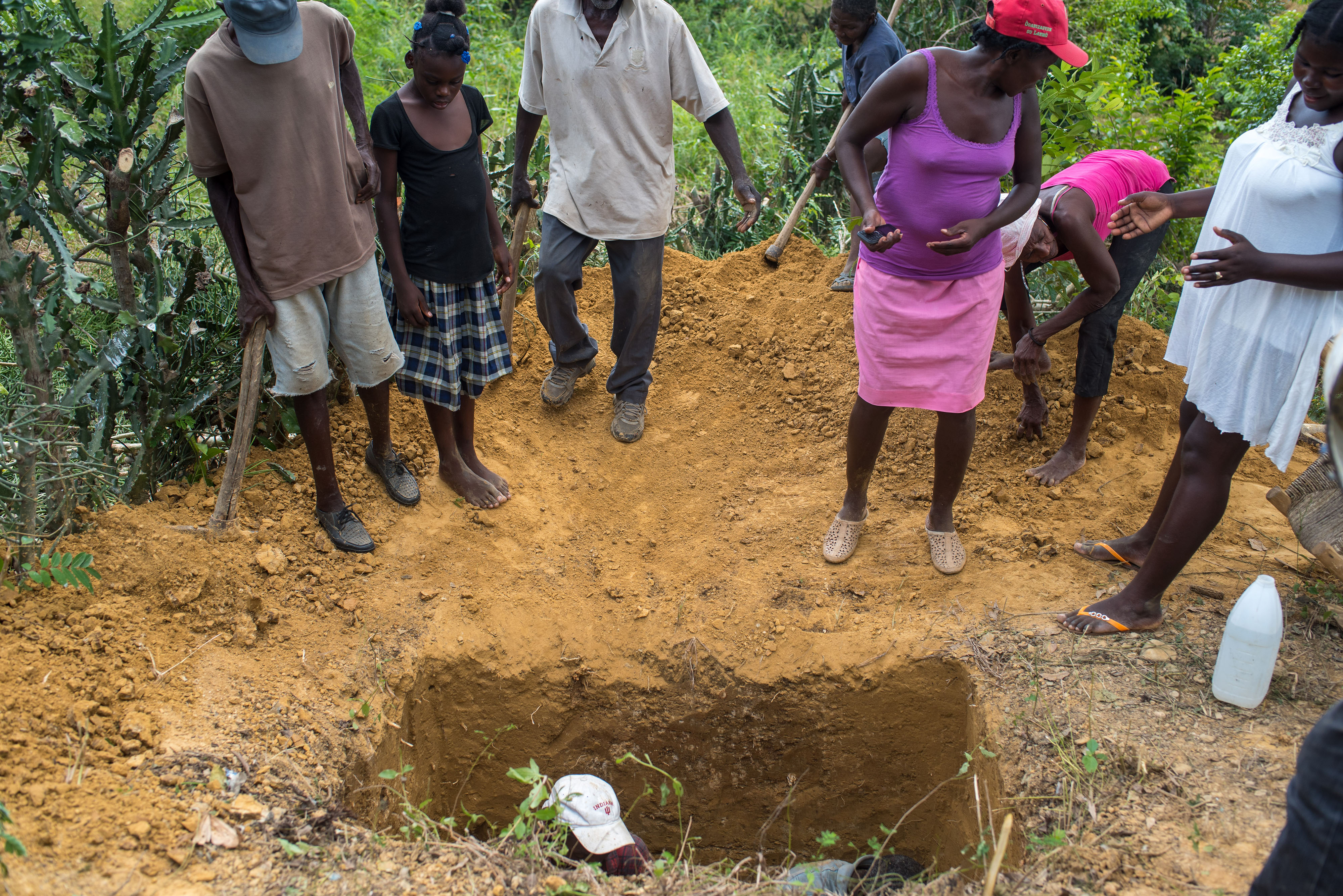
“When communities feel ownership of their new latrines – because they understand why they are important and have built them themselves –they will continue to be used and maintained,” emphasizes Tanis Joel, World Vision in Haiti Water and Sanitation Engineer.
Three years after World Vision in Haiti launched the Community Led Total Sanitation approach, close to 8,000 families have dug their own latrines at home, pushing access to improved sanitation up to 28.5% among the most vulnerable families and reducing open defecation down to 68.4%. In 2018, 30 communities in World Vision’s Area Programs reached open defecation free status.
“Our latrine is not sophisticated, but it is easy for the children to use. Hiding behind the bushes is over for us. I am convinced that cholera will no longer have a hold on my family and my community,” says Polès.
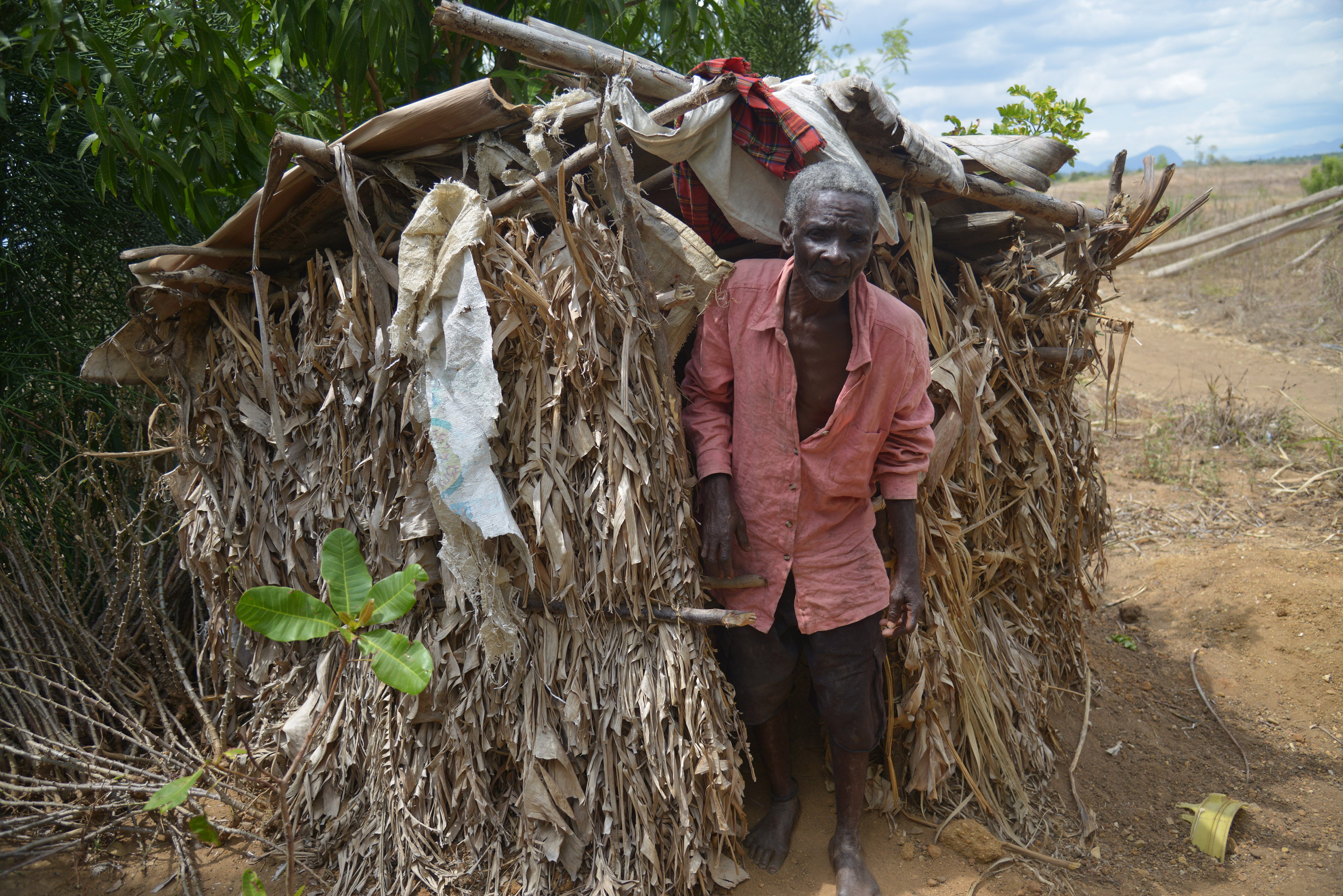
To break off diarrhea’s firm grasp on the most vulnerable families in Haiti, World Vision in Haiti also promotes key hygiene behavior messages such as hand-washing and water treatment.
“I know all the water treatment methods, whether to use Aquatabs, chlorine or boiling the water. Ever since my children had diarrhea, I now purify the water that I give them,” says Venette with pride.
Much more could be said about the challenges and successes achieved in the past three years. We often meet young mothers like Odette Pierre, who make you feel that every small effort makes a difference in the lives of the people we reach.
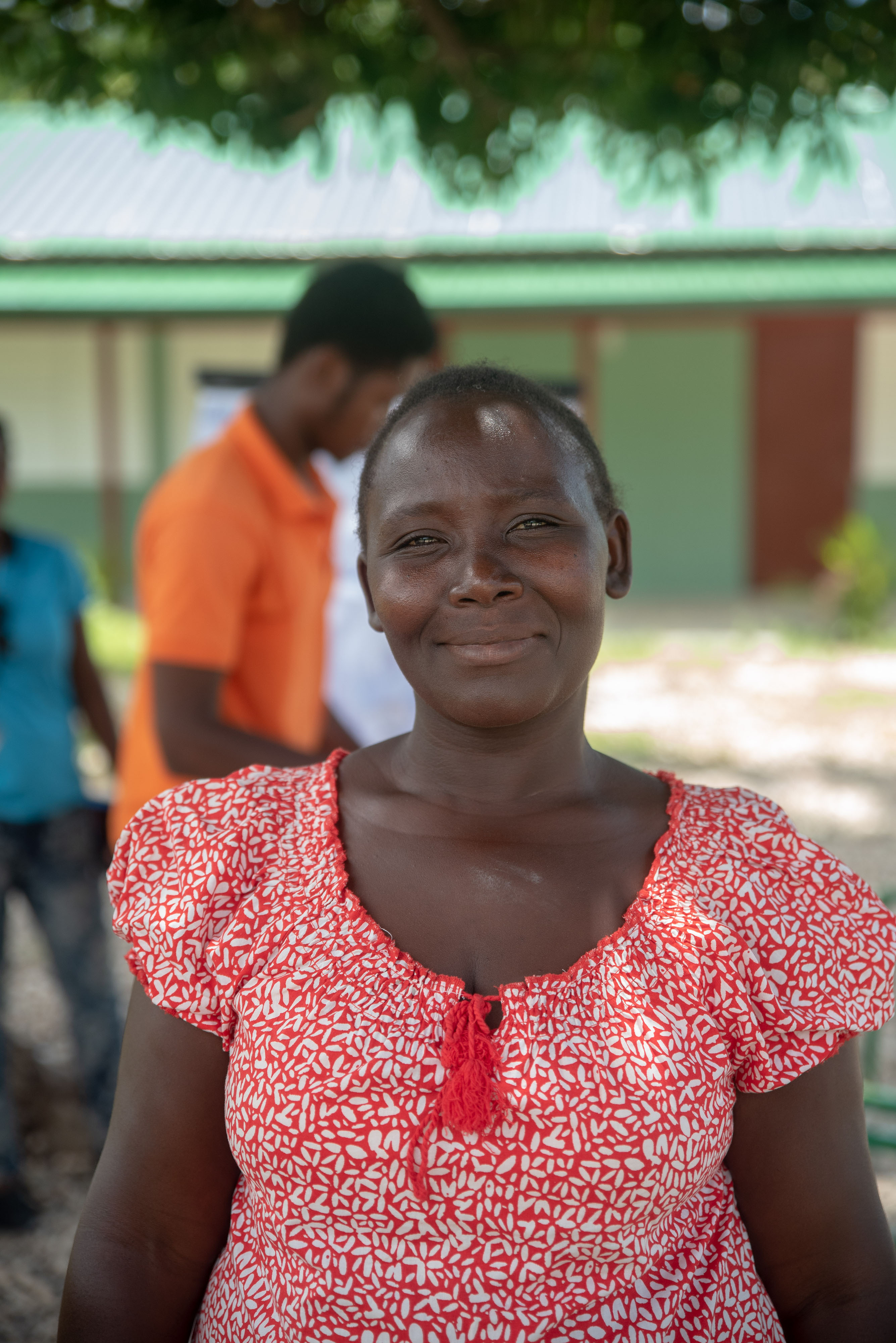
“I used to be very negligent towards my children,” explains Odette Pierre, mother of five children. “I would come from the field and without changing my clothes or washing my hands, and I would start breastfeeding them. Now when I come home from the field, I change my clothes. I wash my hands before taking care of the baby. If he was playing on the ground, I wash his hands and clean him up. In the past, I wouldn’t have done any of this. I have changed because of World Vision’s trainings.”
There is much more left to be done. However, seeing improvements like the increase of water access and reduction of open defecation as well as hearing the heartfelt testimonies from children and their communities, we have hope that we can do more and go further than we imagined. “Our aim is to improve the lives of the most vulnerable children in Haiti by changing one community at a time,” affirms Julie Lee, World Vision in Haiti’s National Director.
[1] Liu L, Johnson HL, Cousens S, Perin J, Scott S, Lawn JE, Rudan I, Campbell H, Cibulskis R, Li M, Mathers C, Black RE; Child Health Epidemiology Reference Group of WHO and UNICEF. Global, regional, and national causes of child mortality: an updated systematic analysis for 2010 with time trends since 2000.External Lancet. 2012;379(9832):2151-61.
[2] Guerrant RL, DeBoer MD, Moore SR, Scharf RJ, Lima AA; The impoverished gut—a triple burden of diarrhoea, stunting and chronic disease.
Nat Rev Gastroenterol Hepatol. 2013; 10: 220-229
Black RE, Allen LH, Bhutta ZA, et al. Maternal and child undernutrition: global and regional exposures and health consequences. Lancet. 2008; 371: 243-260
[3] Enquête Mortalité, Morbidité et Utilisation des Services (EMMUS-VI) Haïti, 2016-2017
[4] https://reliefweb.int/report/haiti/haiti-humanitarian-dashboard-jan-dec-2018
[5] EMMUS-VI, 2016-2017